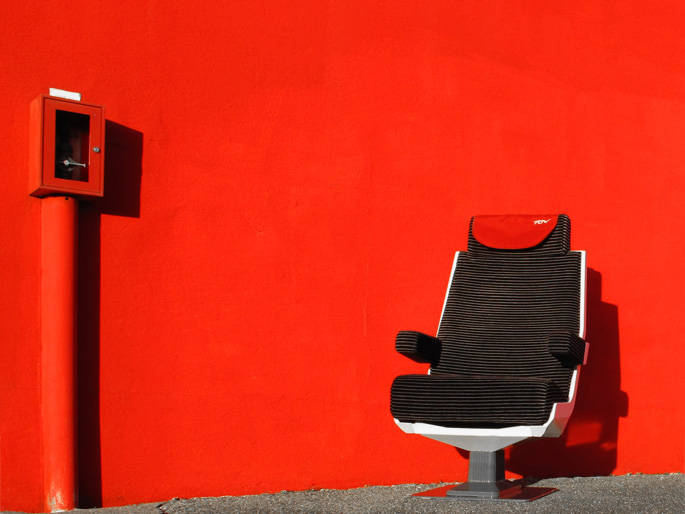Languages

TGV - first class seat (black)
more information:
Roger Tallon
more information:
History of TGV TGV Atlantique "coach" seat, whose design dates back to 1983, was specially designed to reduce vibrations and shocks with minimum weight. It was the result of technological innovation at the time: the computer aided design. From the work of Roger Tallon, the hull was made with molded aluminium.
The first operations of TGV Atlantique mid-life renovation started in July 2001 and were completed in April 2010. Old furnitures were scrapped, except the seats of the latest coach of the latest trainset renovated (train n°388) that we recovered to preserve and renovate them.
TGV Atlantique technical specifications:
Built between 1988 and 1992, the TGV Atlantique are originally intended to operate on the Western side of France. These trains are numbered from n°301 to n°405, and are capable of 300 km / h.
Build Dates: 1988-1992
Territory: LGV Atlantique (West of France)
Top Commercial Speed: 300 km/h (186 mph)
Number in Service: 105
Supply Voltages: 25kV 50Hz AC, 1.5kV DC
Traction: 8 3-phase AC synchronous motors, total power 8800 kW (12000 hp) under 25kV supply
Length and Weight: 238 m / 484 tons
Configuration: 1 power car + 10 trailers + 1 power car
Performance Metrics: 18 kW/tonne / 1.00 tonnes/seat / 18.14 kW/seat
Pressure Sealed: No
Spotting Features: 10 trailers and silver/blue livery, numbering 301 to 405.
Special Notes: Trainset 325 holds world speed record of 515.3 km/h (320.3 mph).
Price:
Seats have black or grey striped fabrics, with or without eating slab on their back side.
The base price is proposed for a seat without slab, and an extra cost is applied for a seat with slab.
Each seat has a socle and is renovated (cleaning of fabrics and hull).
On client's request, each seat can be repainted (€300).
Shipping fees depends on the client's location.
--
[ARTS DECO: seat drawing (same design 2nd)]
[ARTS DECO: original picture]
[ARTS DECO: 3D model]
: Our products
TGV - first class seat (grey)
TGV - first class seat (black)
More information:
34 place du Marché St-Honoré
75001 Paris - France
+33 9 72 13 25 40
concierge@decomotiv.com
TGV - first class seat (black)
Price: upon demand.
More information:
34 place du Marché St-Honoré
75001 Paris - France
+33 9 72 13 25 40
concierge@decomotiv.com






